Planting edamame seeds to grow (Edamame beans how to grow?) – Edamame bean growing
Grow edamame in rental patch. Last time, we did soil preparation before sowing edamame seeds. (Prepare the edamame growing conditions.) About 20 days have passed since that soil preparation. This time, we will sow edamame seeds. (Grow edamame from seed.)
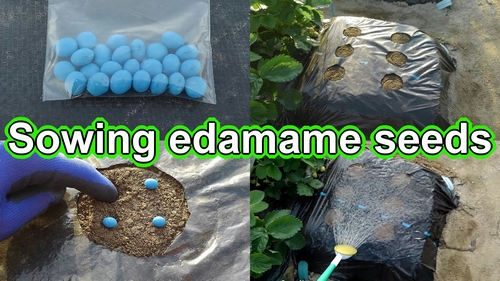
When sow edamame seeds? The timing for planting edamame seeds varies depending on the region and variety being cultivated, but generally falls around mid-April to early May.
Where sow edamame seeds? This year, we will plant edamame seeds next to the strawberries.

Edamame doesn’t require much effort in cultivation, and there is also a low risk of seed sowing failure. Edamame is relatively easy to grow, making it recommended for beginners in home gardening.

We prepared for edamame cultivation in early April, carrying out soil preparation and bed creation. (We prepared edamame growing conditions, plowed the soil and mixed in cattle manure compost.)
How to sow edamame seeds (Edamame planting instructions)
For planting edamame seeds, we make 6 holes in a plot of about 60cm x 60cm (2 feet x 2 feet). You need about 20cm (8 inches) of plant edamame spacing.
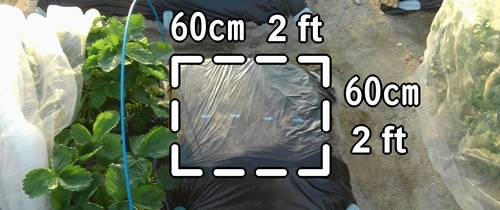
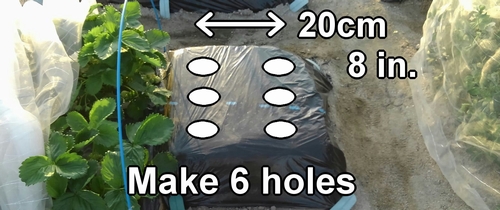
Use a mulch cutter to cut only the plastic on the mulch surface. Once you’ve made holes in the mulch, the preparation for sowing edamame seeds is complete.


Sow 4 edamame seeds in each hole. The planting depth is approximately 2cm (0.8 in.). Press edamame seeds in to a depth of 2m (0.8 in.) with your finger.
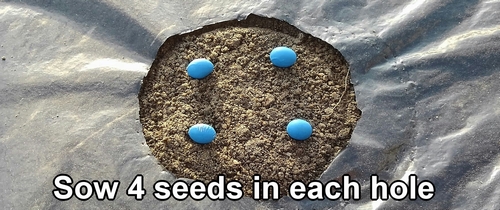
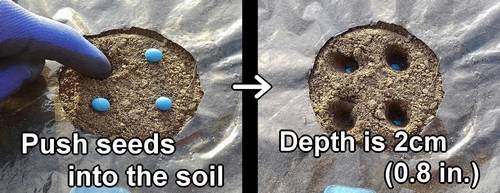
Cover the edamame seeds with soil, press down with your hands. Firmly pressing ensures that edamame seeds and soil adhere closely, allowing water to spread evenly, promoting uniform germination.
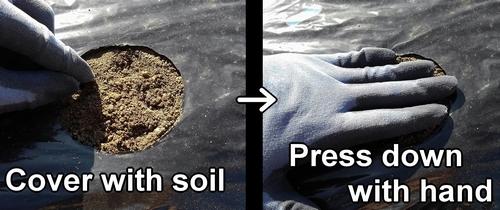
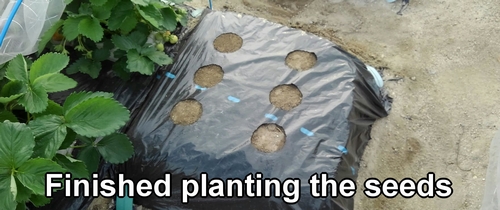
Water the edamame seeds (After sowing the green soybean seeds, water them)
After sowing the edamame seeds, water the soil to the point of moisture. Be careful not to overwater, as it can cause the seeds to rot.

Protect the edamame seeds from insects and birds (Netting grow tunnel for edamame)
Edamame seeds, if not protected after sowing, are targeted by crows and pigeons, so we guard them by covering with insect netting. (Create a tunnel using support stakes and cover it with insect netting.) We have leftover nets from the neighboring strawberries, so we’ll use those to cover.

The insect netting covering the edamame will remain in place until the harvest season is over. By using insect netting and practicing grow tunnel, edamame can be protected from pests. Especially when stink bugs attach, they suck the juice from edamame, so be careful.
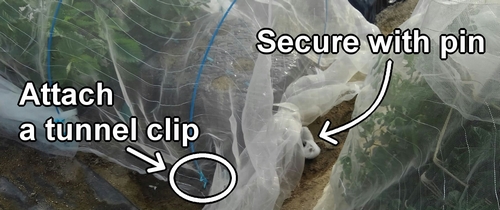
The basic way to set up the insect netting is here. (It’s placed over the neighboring strawberries for crow protection.)
Tie and gather any excess of the insect netting, and secure with clothespins. With this, the edamame seed planting is complete.
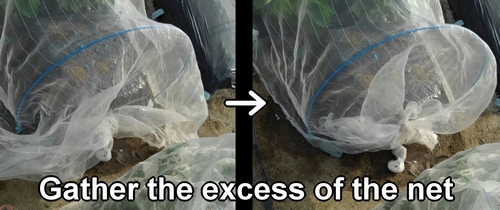
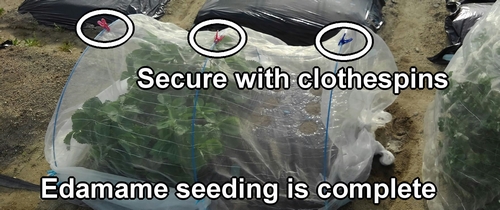
Following is the video for how-to. English subtitles are available.





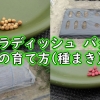

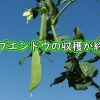





ディスカッション
コメント一覧
まだ、コメントがありません